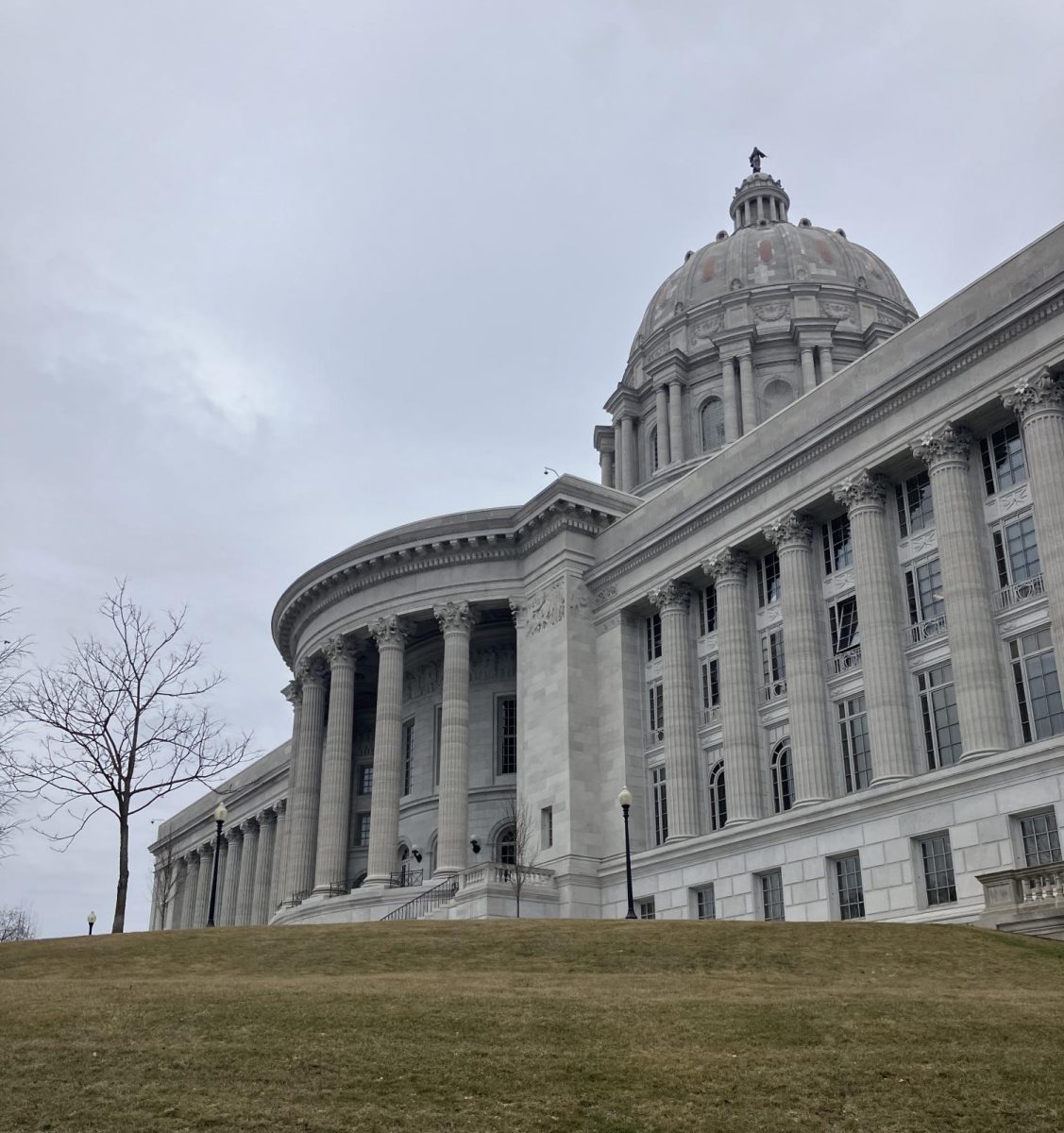With U.S. Senate representatives looking like remains dug up from the Roman Senate, the House of Representatives looking more and more like an elderly housing complex, and the Supreme Court essentially serving as one (even complete with the potential to visit exotic destinations if you get lucky!) The U.S. has a pretty big (and old) problem.

According to Rutgers University, the median age of a congress member in the 119th Congress is about 20 years older than the median American. Additionally, the previous 118th Congress was one of, if not the least productive bodies in American history. Donald Trump, while consistently attacking Joe Biden’s age, is set to be the oldest president in history, ending his term at 82.
One of the most talked about concerns linking age to our government’s lack of efficiency and poor public reception are health problems. There are a few key examples of this.
The late Sen. Dianne Feinstein (D-Calif), a six term senator–died in office on Sept. 29, 2023–after suffering memory issues, debilitating shingles, and encephalitis. Before her death, she had refused to leave, insisting upon continuing her term–despite her contemporaries describing her condition as “frightening.”
Now, while I admire her adherence to her position, it’s difficult not to acknowledge the fact that her mental state was less than ideal. Even if we suspend disbelief and say that her policy making abilities were unhindered–it still doesn’t exactly spark faith in our government.
But don’t worry, the geriatric escapades are bipartisan, so I’ll embrace my inner Oprah and give everyone an example. Sen. Mitch McConnell (R-Ky) has experienced several “freezes” in front of the press–along with having difficulty responding to questions. Unless he’s offering some kind of strange tribute to Frozone, it’s pretty clear that his cognitive health isn’t necessarily in the best shape.
Both Sen. McConnell and Rep. Nancy Pelosi (D-Calif), prominent members of congress–have suffered falls, with Pelosi breaking her hip, and McConnell ironically falling inside of the Capitol itself.
Although, I’ve saved the best for last. Rep. Kay Granger (R-Texas) was found in an assisted-living facility, after not voting on the house floor for six months. Even more egregious, is the fact that her office was closed and vacant while her term was still going. She was suffering from dementia.
While I love my grandparents, I don’t think that I’d trust them–given their health–to make complicated policy decisions, (although choosing what type of pie to bake is arguably pretty important). I think that Rep. Ro Khanna (D-Calif) stated it best when he described our government as a “sclerotic gerontocracy.” Sclerotic is a reference to sclerosis, an age related condition, and a gerontocracy is a government based on rule by the elderly.
However, our problems go a little bit further than a couple of politicians keeling over. Before the 2024 election, an Associated Press study found that 77% of Americans felt that Biden was too old to be effective in a potential second term, and 51% felt that Trump was too old to serve as president. Older candidates only propagate the cycle in which voting serves as choosing the lesser of two evils to suffer under for another four Super Bowls, Christmases, and summer vacations.
While many Americans might not be feeling very full right now because of decisions by lawmakers (certainly not with eggs at $8 a dozen) another pretty important thing America has had trouble filling up is the ballot box. The 2024 election had a 2% lower turnout than 2020, with approximately 89 million Americans choosing not to vote.
Last year, Dr. Bruno Castano Silva, a professor of sociology at Berlin University, authored a paper that linked candidate age to voter turnout. What they found: in 223 national elections in 58 countries, individuals under 30 were more likely to vote if their preferred party had a younger candidate–a factor that has only increased between the ‘90s and today. Younger people feel that they aren’t heard–even though young people are just as discrete of a group as those based on gender or ethnicity, and are just as underrepresented.
Another factor playing against older leaders is the fact that they are simply more likely to start wars and other conflicts. (Hopefully we can all agree that those are bad? I don’t think any Lockheed executives will be reading this, but I guess we’ll never know…) This impulse in a leader spans out of the desire to build a legacy–leaders discount the present and look towards establishing an idealistic future that immortalizes their “greatness” by using militaristic and drastic means. (Sound familiar to anyone?)
Hopefully, by this point, everyone can agree with me in thinking “this is not very cool!” Thankfully, there are a few steps that the U.S. can take. It’s nothing short of a miracle that I agree with Elon Musk on a policy issue, but in December, Musk hinted at the idea of mandating cognitive tests for politicians. Cognitive tests would ensure that politicians aren’t undergoing cognitive decline while in office, and would be a logical step in reasoning given that careers that involve life or death situations, pilots, doctors–usually require or endorse some form of testing.
A more populist solution would be to mandate age maximums for politicians. 79% of Americans favor limits for elected officials in Washington D.C., with 74% agreeing that limits should also be placed on Supreme Court justices. That’s greater than the percentage of people in the U.S. (63%) that support legal abortion. (Although interestingly–there is a slight partisan split–more Republicans support limits on elected officials, while more Democrats support limits on Supreme Court justices.)
Considering–the fact that only 3% of Americans think that an ideal president should be in their seventies: what’s the issue blocking such limits from happening? There are two barriers.
Firstly, the fact that a constitutional amendment would likely be required. This essentially sounds a death knell for any potential change. The last constitutional amendment that was passed was in 1992. 747 amendments have been proposed since 1999, and none have passed.
And secondly, the fact that members of Congress aren’t exactly likely to vote for something that impedes their ability to continue their political careers. It’s not a stretch to think that politicians wouldn’t want to vote for something that disenfranchises them–especially not a supermajority of them. Many opponents of such limits cite the fact that capable lawmakers would be removed from politics in the event of such a change.
Even with extreme bipartisan support, beneficial effects on legislative efficiency, and support from people like the late President Jimmy Carter–at this time–age limits remain a pipe dream. Although, hope still remains that this issue will naturally amend itself to a degree, with the 119th Congress being slightly younger than previous iterations.
But hey, if we think about Congress as a nursing home, at least we can know that they’ll be entertained by the absurd messaging bills that some lawmakers have proposed. My favorites: carving Trump on Mount Rushmore, creating a $500 bill with the likeness of Trump, or even abolishing OSHA.
There are a few things that I stumbled upon while researching this article that I’d recommend looking at if you’re interested in this topic. In Ireland, there was an amendment proposed to lower the minimum age for the presidency. The result: a big nope. Also, there’s a newly emerging field called “neuropolitics,” which outlines the intersection between neuroscience and political science in making decisions–pretty cool stuff. Finally, here’s the link to the article that I quote above the story.


![“On this course, the future of democracy [will] be, to modify a famous Abraham Lincoln quote, ‘of the elderly, by the elderly, for the elderly'”
(ScienceDirect - article linked below)](https://laduepublications.com/wp-content/uploads/2025/02/Screenshot-2025-02-12-at-8.43.30 PM-1200x838.png)






Frank Chen • Feb 24, 2025 at 9:03 pm
Based and true.
How come people need to take tests to drive cars but not to control nuclear weapons?